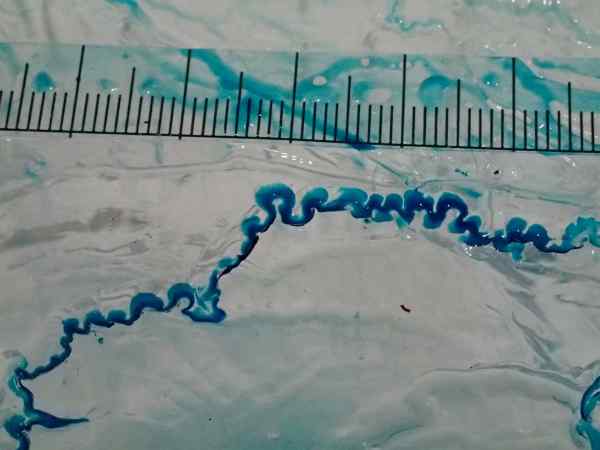Images of climate innovation
Vanishing landscapes
The image shows a millimetre-scale meltwater channel created over an ice block in the laboratory. Easier to carry out than fieldwork in icy landscapes, lab experiments are helping us understand how meltwater channels form and how much water they carry towards the oceans while contributing to sea-level rise. Results will help establish adaptation strategies for communities who live in cold regions (e.g. Inuit-Nunangat) as they adapt to ever-changing territories.

Erosion is nature's most successful artist. Its artwork is found everywhere on our planet and across many extra-terrestrial environments. Erosion operates at many different scales, often creating repeating patterns such as meandering channels. Melting ice caps and glaciers that dictate sea-level rise on Earth often have meandering channels carved by thermal erosion (melting) on their surface.
These features can be seasonal or permanent but in any case, they are some of the pathways through which glacial meltwater flows away from these vanishing landscapes. Logistical challenges render field research in glacial environments difficult. In spite of the advances in computer models and remote sensing capabilities (such as high-resolution satellite images), laboratory experiments are a viable and exciting complementary path to better understand the processes driving meltwater channel formation and evolution. My experiments are the first ever-reported self-formed meltwater channels in the laboratory.
They provide insight into the processes of formation and evolution of meltwater channels on ice and are key to inform and accurately constrain computer models developed to quantify surface meltwater contribution to sea-level rise. The production, storage, and transport of meltwater over ice on Earth is a topic of growing interest and meltwater-like channels have also been recognized on the South Pole of Titan (one of Saturn's moons), where rivers of liquid methane carve their way through frozen landscapes.
Understanding the dynamics of meltwater channels is, therefore, crucial to predict the rate of sea-level rise in response to climate change and design resilient solutions and adaptation strategies for communities at risk (e.g. Inuit Nunangat). It also helps understand environmental conditions on extra-terrestrial bodies, helping to not only apply our knowledge on Earth but also understand other corners of the universe.
Entrant: Roberto Fernández , Energy & Environment Institute, University of Hull
Copyright: Roberto Fernández
Funding: The Leverhulme Trust (grant ECF-2020-679).